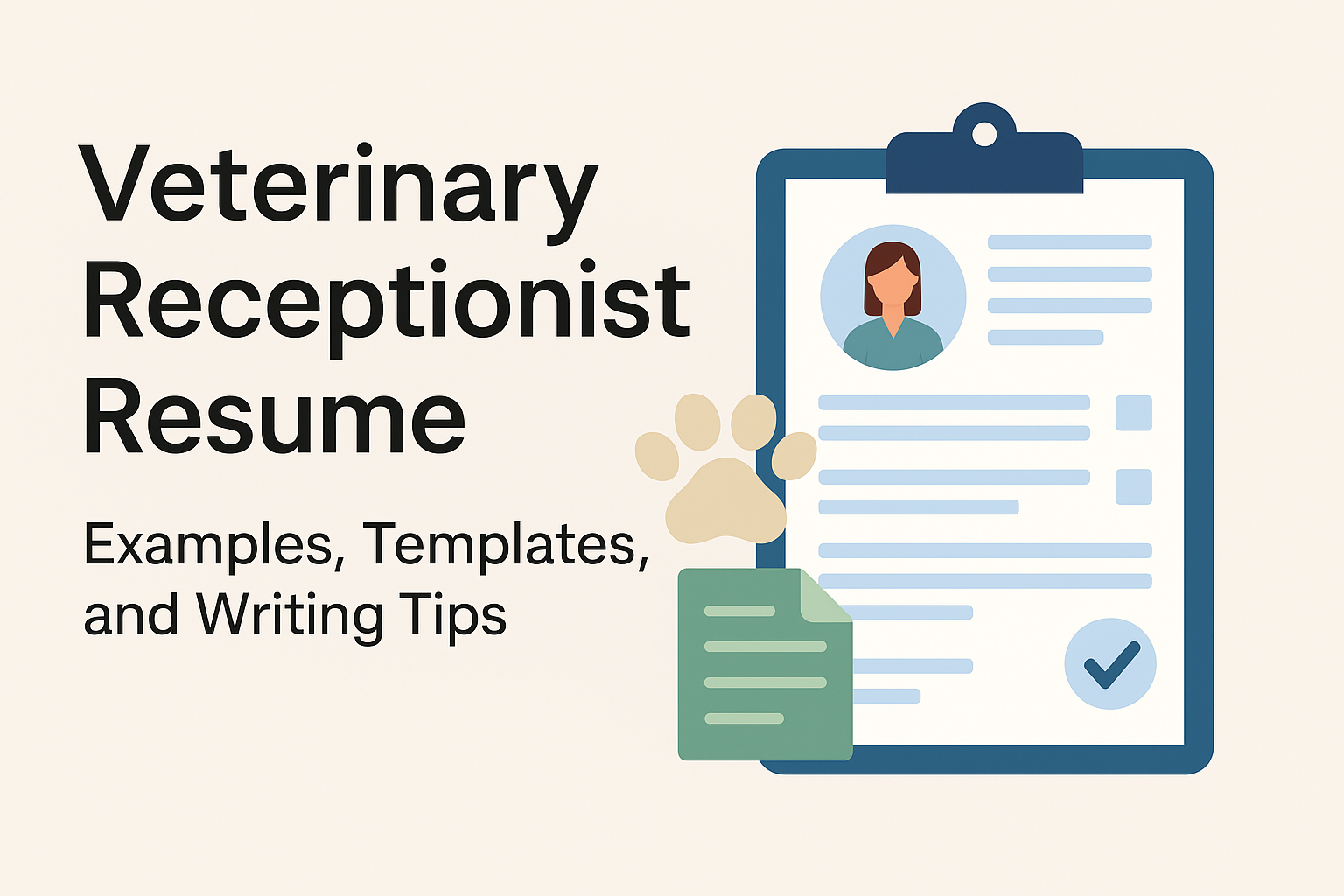In the fast-evolving field of healthcare, crafting a standout Occupational Therapist resume is essential for success. With our carefully selected resume examples for Occupational Therapist, you’ll gain insights into showcasing your unique qualifications, expertise, and clinical experiences. Prepare to impress potential employers and boost your chances of landing that ideal position in this rewarding profession!
Occupational Therapist Resume Examples – Free Download
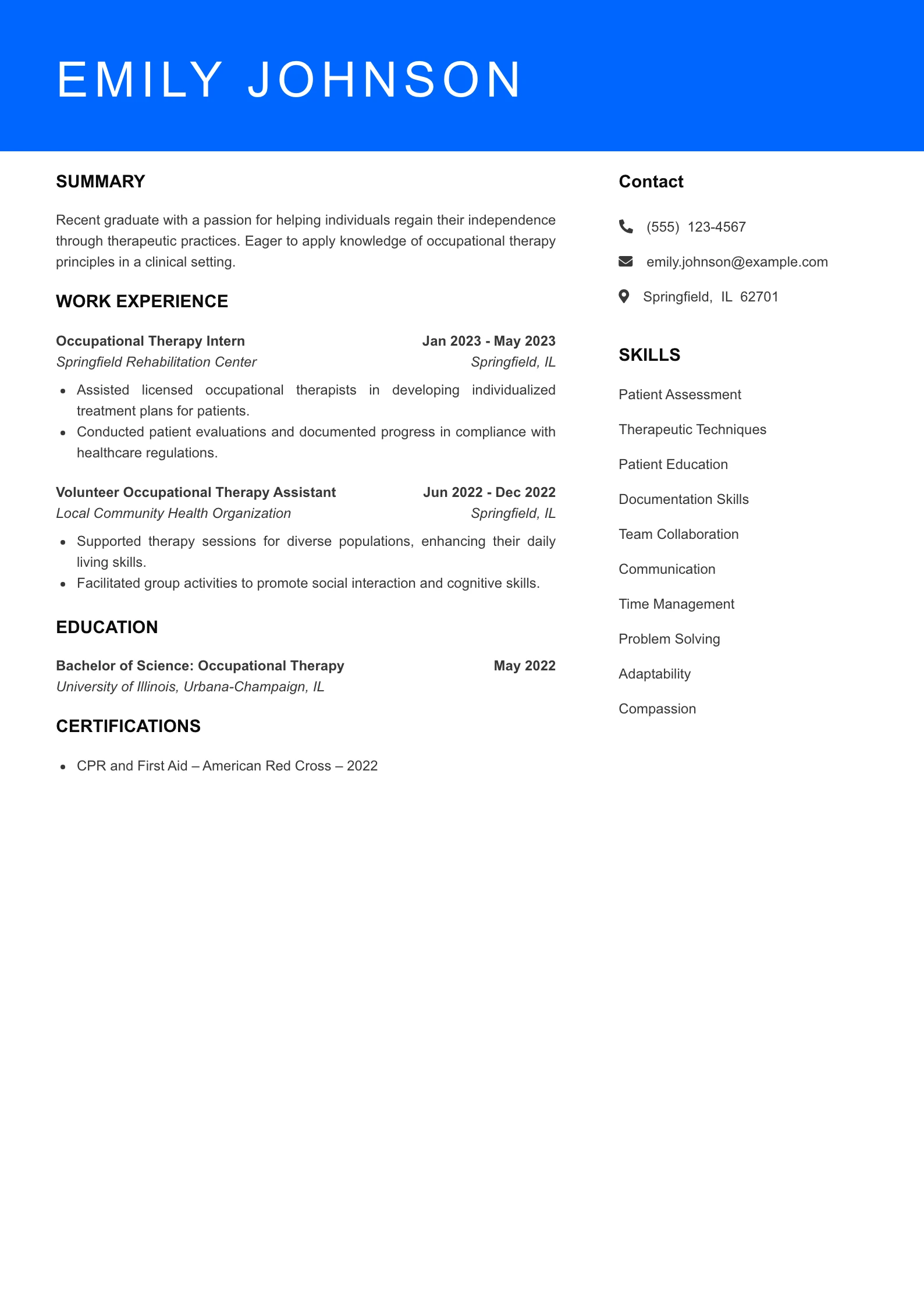

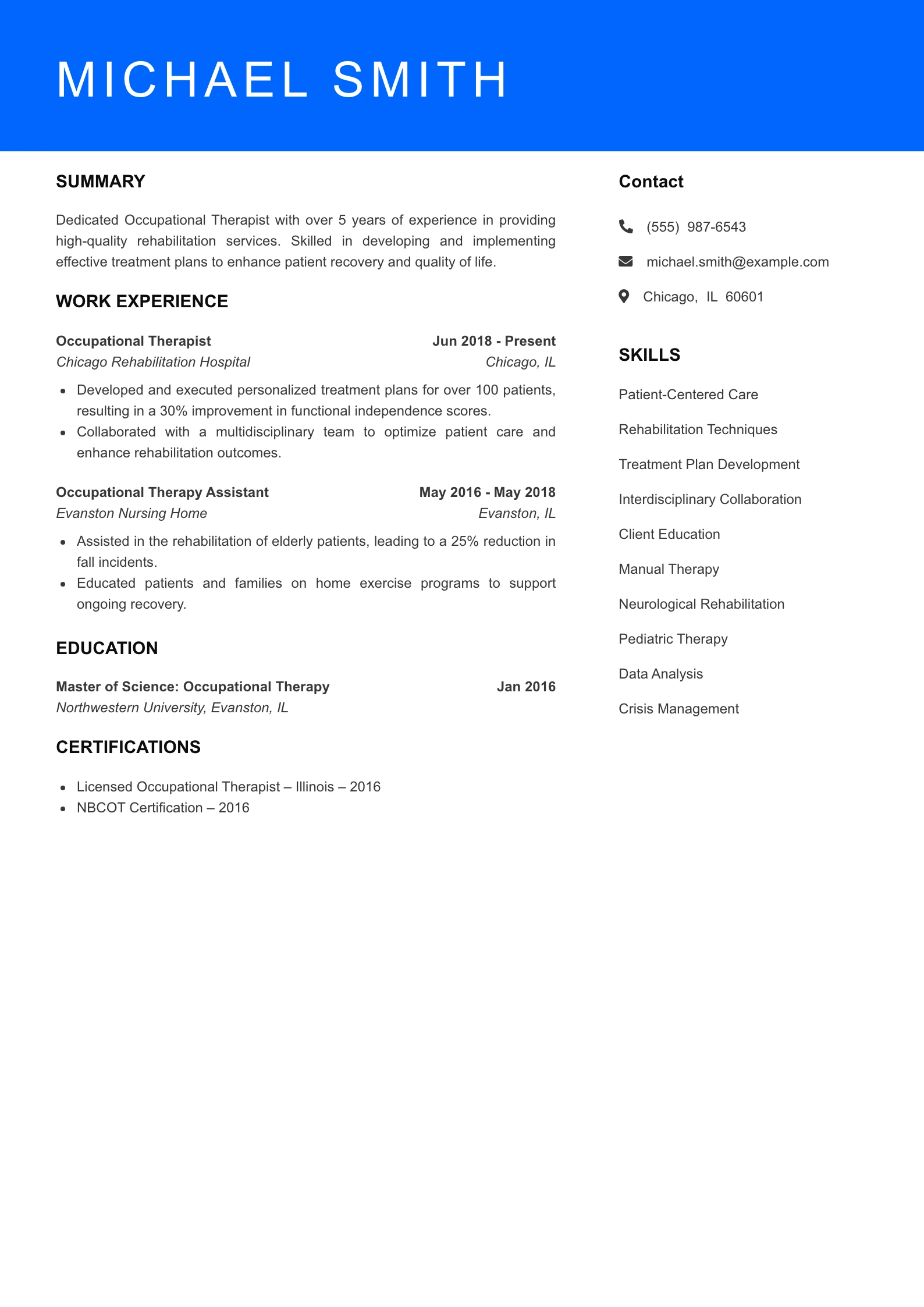
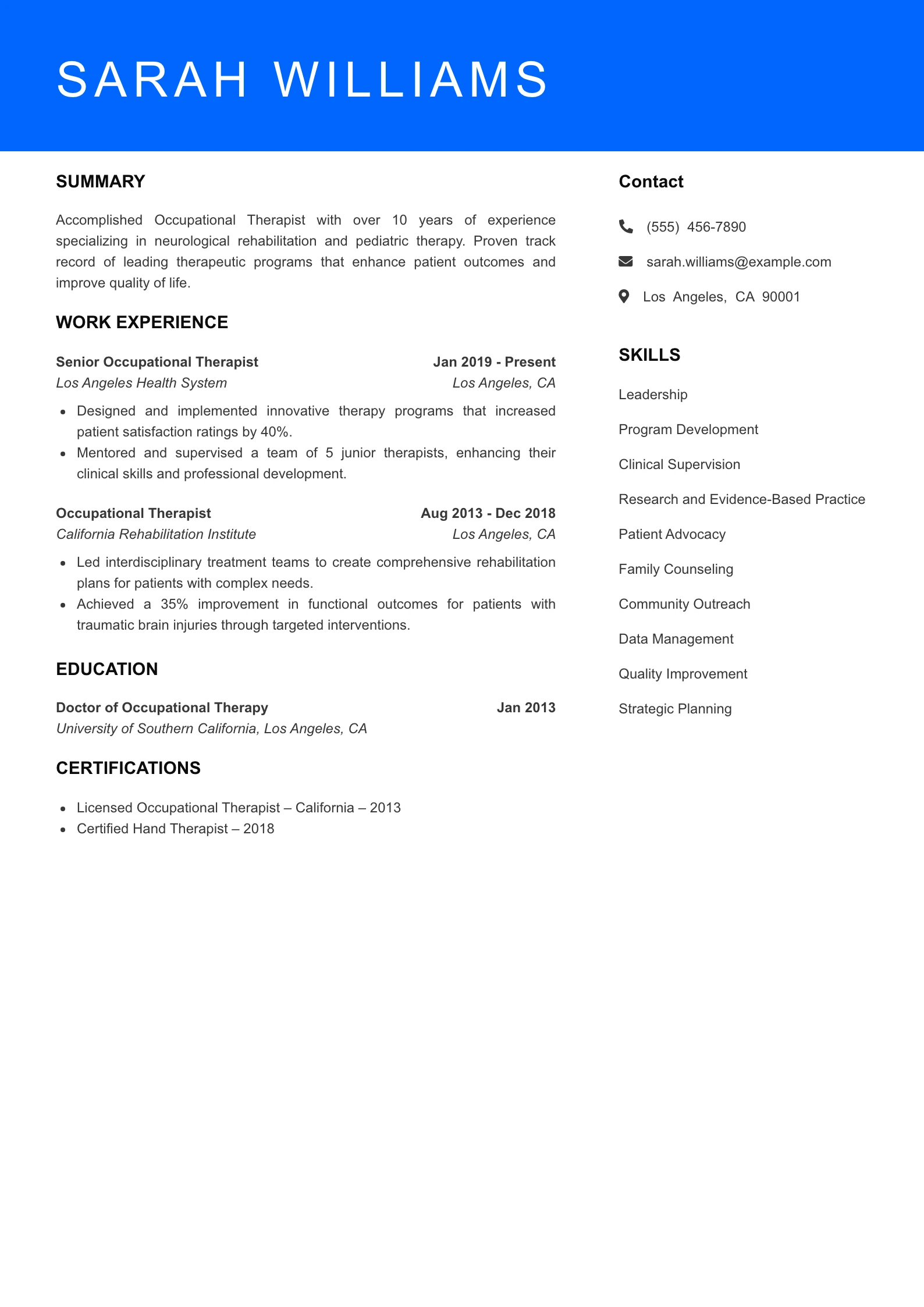
Occupational Therapist Resume Examples
Entry Level Occupational Therapist Resume Example
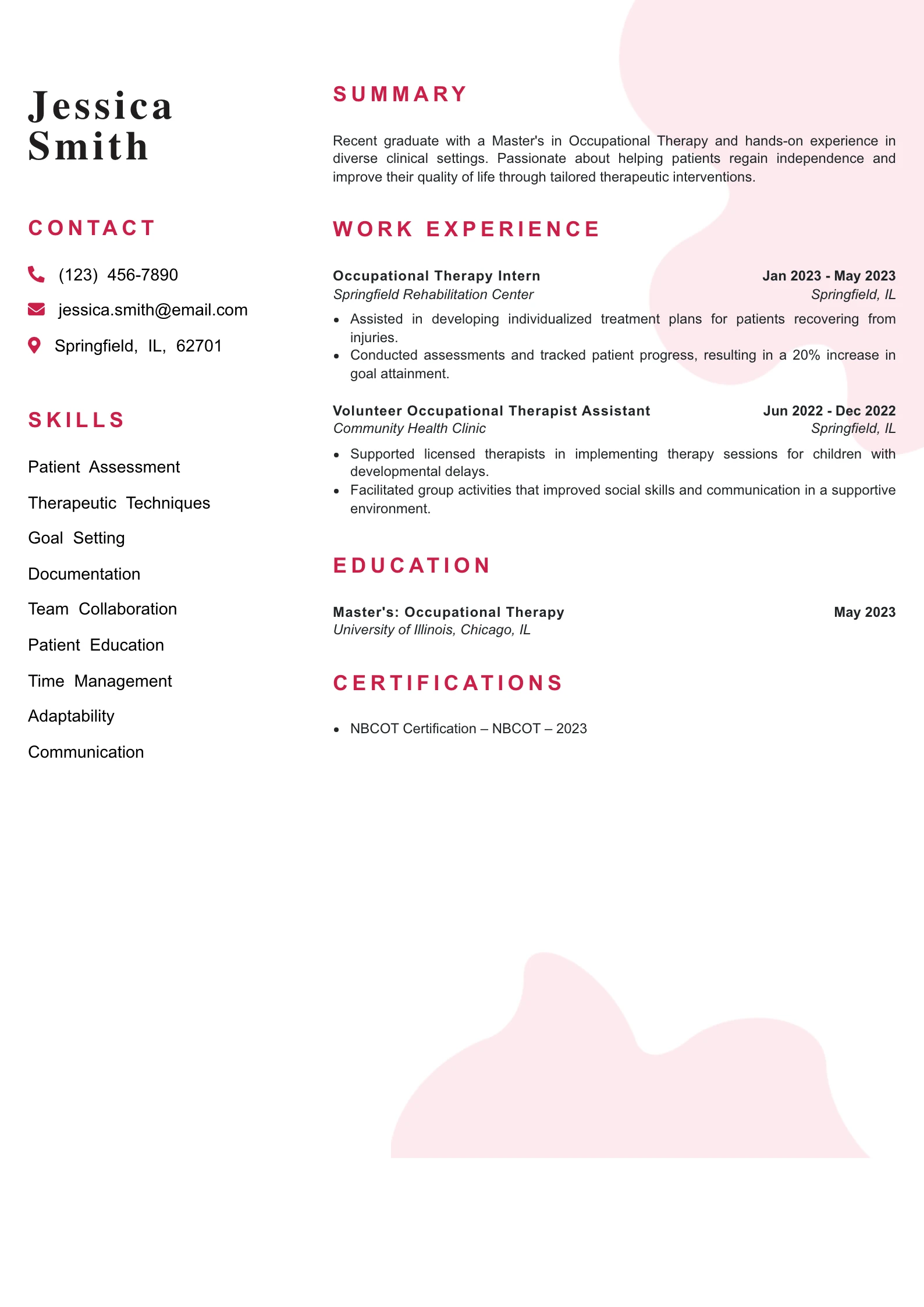
Why This Resume Works
- The summary clearly articulates Jessica’s educational background and passion for occupational therapy, effectively setting the stage for her qualifications as a recent graduate.
- The skills section highlights relevant competencies that align with the role of an Occupational Therapist, showcasing her strengths in patient care and collaboration.
- The work history includes quantifiable achievements, such as the 20% increase in goal attainment, demonstrating her direct impact on patient outcomes and enhancing her appeal to potential employers.
- The experience detailed in the work history is appropriate for an entry-level position, reflecting her recent graduation while still showing practical experience in clinical settings.
- The overall clarity and professional tone of the resume create a positive impression, making it easy for hiring managers to assess her fit for the role.
Mid Level Occupational Therapist Resume Example
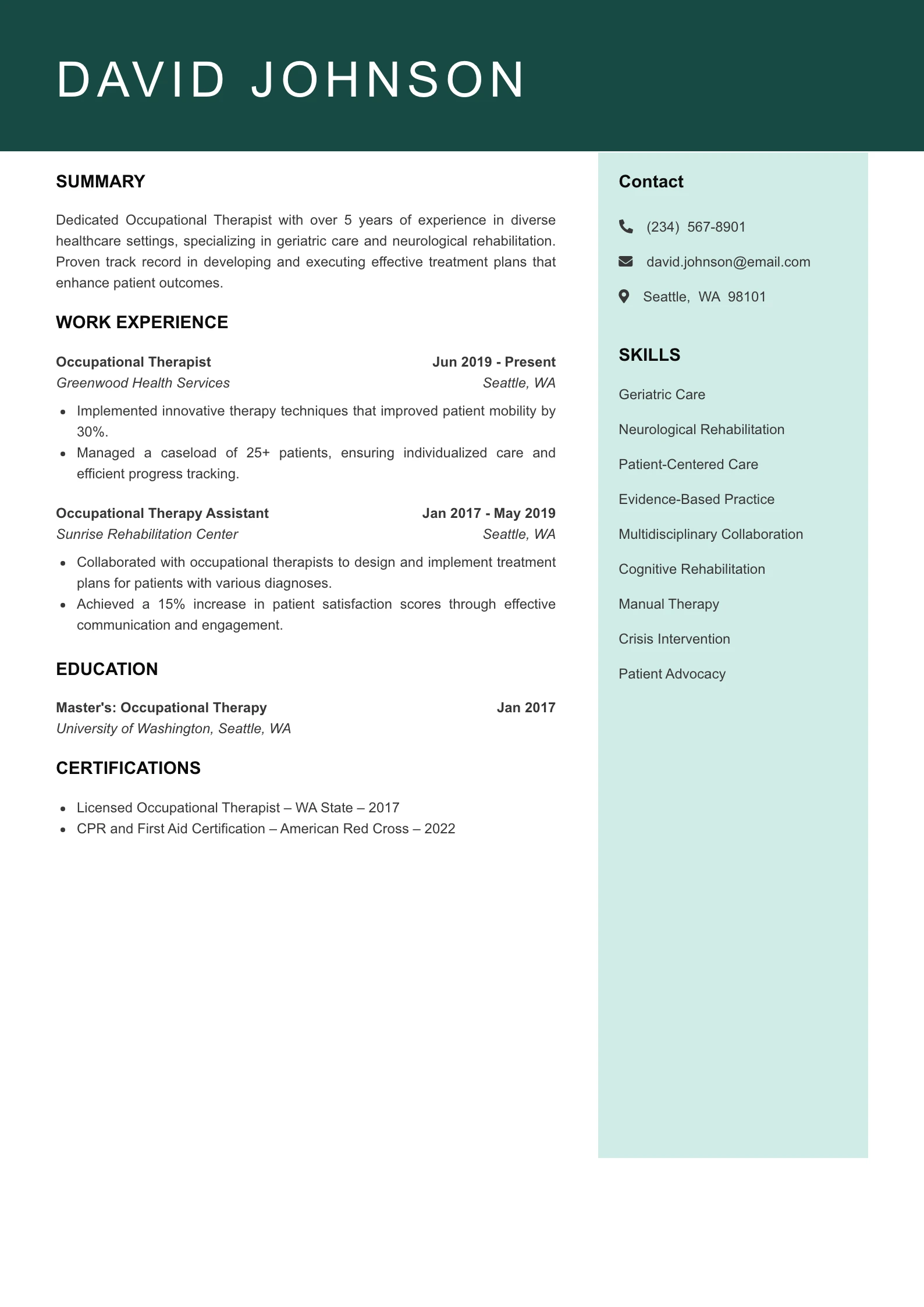
Why This Resume Works
- The summary clearly articulates David’s professional identity, years of experience, and areas of specialization, immediately positioning him as a qualified candidate for occupational therapy roles.
- Relevant skills are well-highlighted, showcasing a comprehensive range of competencies that align with the demands of occupational therapy, making it easy for hiring managers to assess his qualifications.
- The work history includes impactful achievements, such as a 30% improvement in patient mobility and a 15% increase in patient satisfaction scores, demonstrating measurable success and effectiveness in prior roles.
- The resume reflects a mid-level professional fit, with over 5 years of experience and progressive responsibilities, indicating readiness for advanced positions in the field.
- The clarity and tone are professional and focused, using straightforward language that effectively communicates expertise and accomplishments without unnecessary jargon.
Senior Level Occupational Therapist Resume Example
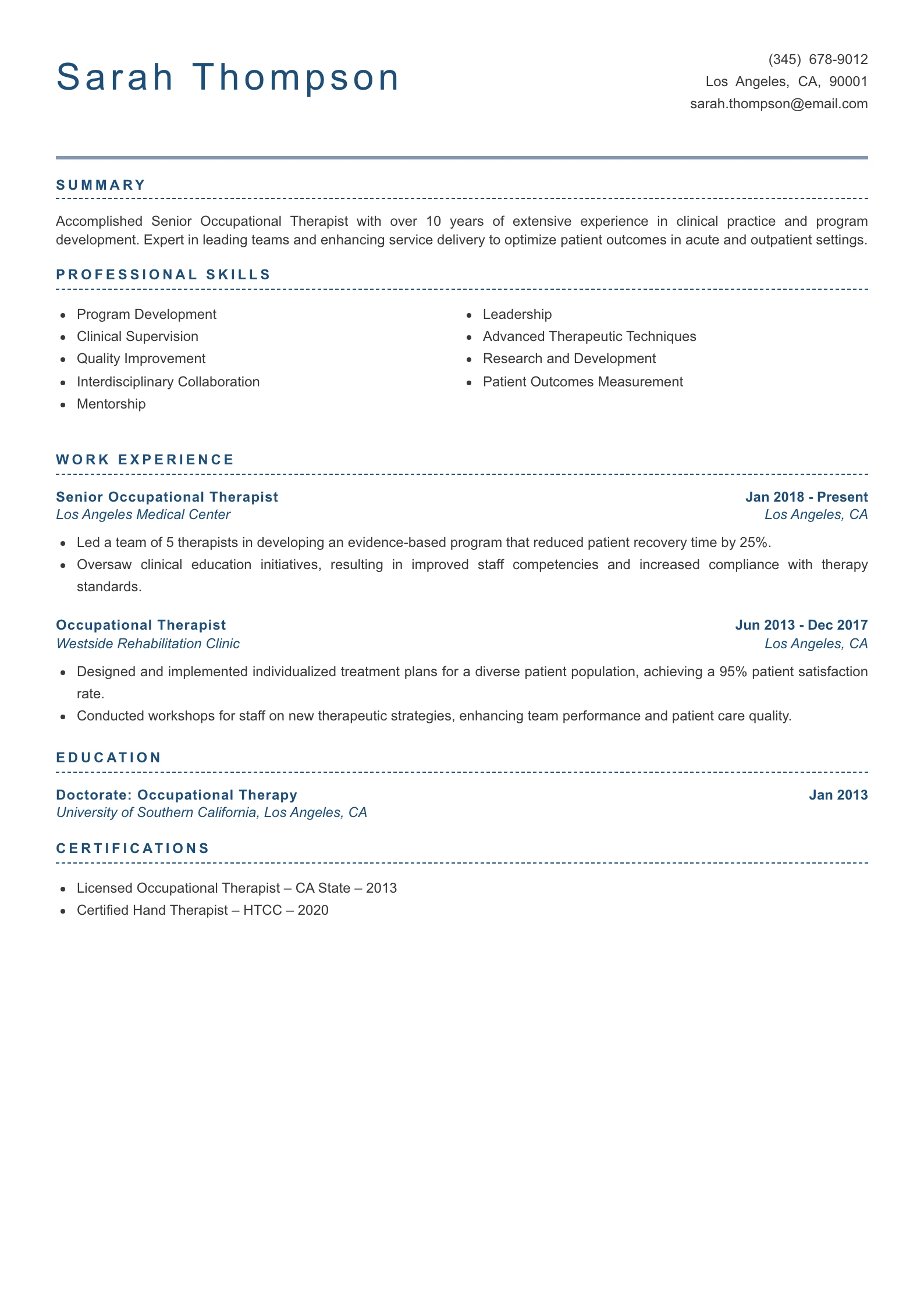
Why This Resume Works
- The summary is clear and concise, effectively highlighting Sarah’s extensive experience and key expertise as a Senior Occupational Therapist, which aligns well with her career level.
- Relevant skills are prominently listed, showcasing a blend of clinical and leadership abilities that are essential for a senior role in occupational therapy.
- The work history is impactful, with quantifiable achievements such as a 25% reduction in patient recovery time and a 95% patient satisfaction rate, demonstrating her effectiveness in improving patient outcomes.
- The resume clearly fits a senior-level position, reflecting both her advanced education and substantial work experience in the field, which is appropriate for a candidate at this stage of their career.
- The tone is professional and assertive, reinforcing Sarah’s qualifications and leadership capabilities while maintaining clarity throughout the document.
How to Craft a Strong Occupational Therapist Resume
A well-crafted resume is crucial for Occupational Therapists (OTs) as it serves as the first impression to potential employers. Hiring managers typically look for a blend of clinical expertise, compassionate patient care, and effective communication skills. This guide will help you highlight your strengths effectively, ensuring you stand out in a competitive job market.
Summary Statement
A strong summary statement is essential for Occupational Therapists as it encapsulates your professional identity and sets the tone for the rest of your resume. This section should provide a snapshot of your experience level, specialization, relevant soft skills, and any certifications you hold. A well-structured summary can grab the attention of hiring managers and entice them to learn more about you.
When crafting your summary, aim for a confident and tailored tone that reflects your unique qualifications. Focus on results-driven language that illustrates how you have positively impacted your patients and workplaces. Your summary should leave a lasting impression and encourage further exploration of your resume.
Motivated recent nursing graduate with clinical experience in pediatric settings…
Mid-Level:
Experienced Pediatric RN with 5+ years in fast-paced hospital environments…
Skills & Qualifications
Highlighting the right core and soft skills is vital for Occupational Therapists to demonstrate their competency in the field. Core skills may include patient assessments, therapeutic techniques, and documentation proficiency. Soft skills such as empathy, communication, and adaptability are equally important, as they underscore your ability to connect with patients and collaborate with interdisciplinary teams.
To identify the best skills to include, review job descriptions for the roles you’re targeting. Look for frequently mentioned skills and phrases that align with your expertise. This will not only improve your chances with hiring managers but also increase your visibility with Applicant Tracking Systems (ATS).
- Pediatric patient care
- Vital signs monitoring
- Parent communication
- Electronic Health Records (EHR)
- IV administration
Top ATS Keywords for Occupational Therapist
Work History
In the work history section, focus on showcasing your patient care experiences, metrics that highlight your impact, leadership roles, and any specialty procedures relevant to your practice. Use a reverse-chronological format to present your experience, ensuring your most recent positions are listed first.
Quantified bullet points are highly effective in this section; they provide concrete evidence of your contributions and accomplishments. For example, instead of stating “worked with pediatric patients,” you might write “developed and implemented individualized therapy plans for 30+ pediatric patients weekly, resulting in a 20% improvement in their mobility scores.”
Intern, Children’s Hospital, New York, NY, June 2022 – Aug 2022
– Assisted with routine pediatric checkups
– Documented vital signs
– Supported nursing staff with daily care
Mid-Level:
Registered Nurse, St. Mary’s Medical Center, Boston, MA, Jan 2019 – Present
– Led pediatric triage for ER
– Administered vaccinations and monitored post-op recovery
– Trained new hires on pediatric protocols
Education
Most Occupational Therapists hold a Master’s degree in Occupational Therapy or a related field. It’s important to list your degrees and any relevant certifications prominently in this section. Include the degree type, school name, location, and graduation year for each entry.
Formatting should be clean and consistent. Use bold for your degree and school name, followed by the city, state, and year of graduation. This enhances readability and allows hiring managers to quickly assess your educational background.
Degree, School Name, City, State, Graduation Year
Example:
BSN, University of Washington, Seattle, WA, 2021
Additional Sections
Consider including optional sections in your resume to further showcase your qualifications. Sections such as Certifications, Languages, or Awards can add depth to your application. For OTs, certifications can be especially valuable, as they demonstrate your commitment to professional development.
When formatting certifications, be sure to include the name of the certification, the issuing organization, and the year you received it. For example:
- Certified Hand Therapist (CHT) – American Occupational Therapy Association – 2022
- Basic Life Support (BLS) – 2021
- PALS (Pediatric Advanced Life Support) Certification – American Heart Association – 2022
- Basic Life Support (BLS) – 2021
Do’s and Don’ts
To ensure your Occupational Therapist resume stands out, keep the following practical tips in mind:
Do: – Tailor your resume for ATS by including relevant keywords. – Show impact by quantifying your achievements. – Use industry-specific terms to demonstrate your expertise.
Don’t: – Use generic statements that don’t reflect your unique contributions. – Ignore the importance of soft skills; they are critical in healthcare. – Overuse buzzwords that may dilute your message.



